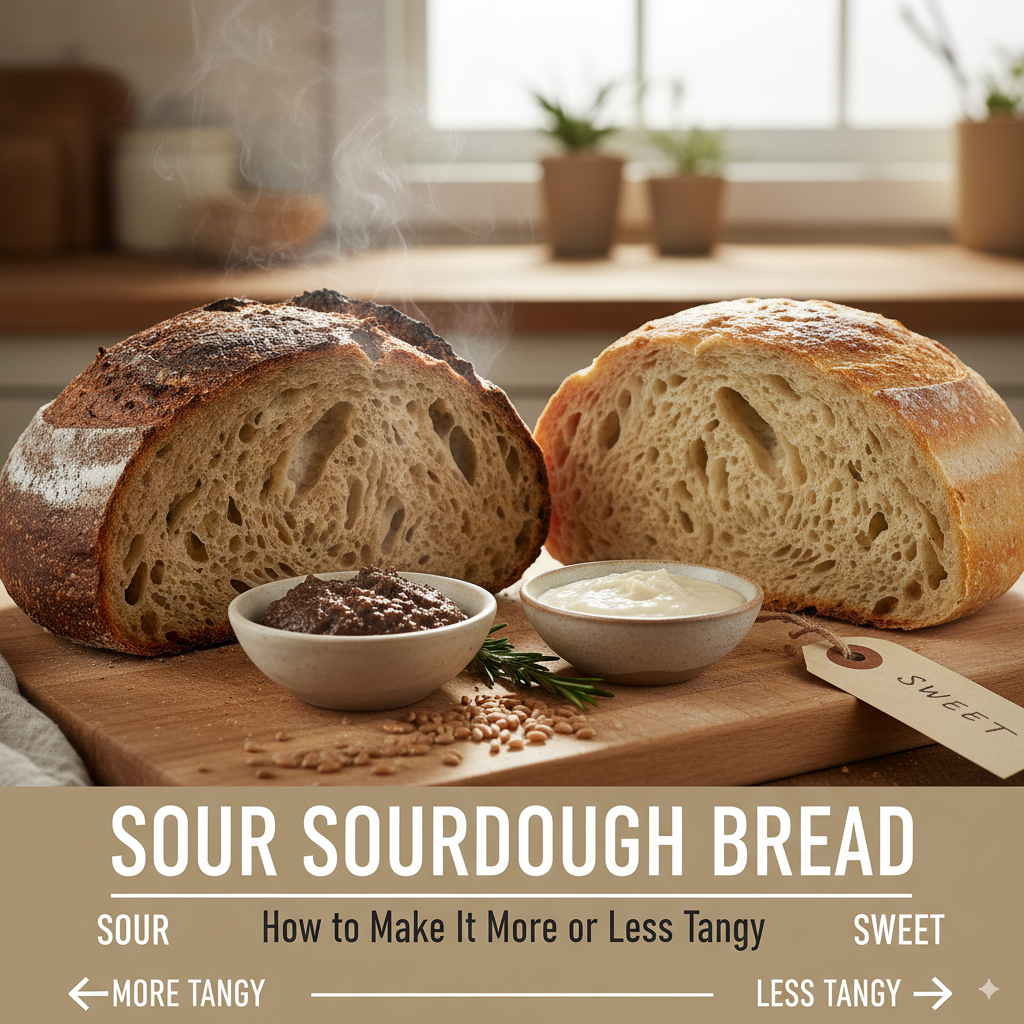If you’ve ever taken a bite of sourdough and thought, “This is tangier than usual,” you’re not imagining things. The sour flavor in sourdough bread comes from natural fermentation — and it can be adjusted to your taste. Some bakers love a bold, tangy bite, while others prefer a milder loaf. In this post, we’ll explore why sourdough tastes sour, how you can make your bread more sour, and what to do if it’s coming out too sour.
Why Is Sourdough Bread Sour?
The sour flavor comes from the balance of wild yeast and lactic acid bacteria living in your sourdough starter. These microbes produce acids during fermentation:
- Lactic acid – gives a mild, yogurt-like tang.
- Acetic acid – sharper, vinegar-like sourness.
How much of each acid develops depends on your flour, feeding schedule, fermentation time, and temperature. That’s why no two sourdough loaves taste exactly the same.
How to Make Sourdough Bread More Sour
Want that bold San Francisco–style tang? Try these techniques:
- Extend fermentation time
- Use an overnight cold retard (fridge proofing). This encourages more acetic acid development.
- Lower starter hydration
- A stiff starter (lower water ratio) tends to produce more acetic acid = more tang.
- Incorporate whole grain flours
- Whole wheat or rye give the bacteria more nutrients, which can increase sourness.
- Feed your starter less frequently
- Letting the starter ferment longer before feeding develops more acidity.
- Use cooler fermentation temperatures
- Cooler temps favor acetic acid bacteria, giving you sharper sourness.
How to Make Sourdough Bread Less Sour
Prefer a mild loaf? Try shifting toward more lactic acid production:
- Ferment at warmer temperatures
- Warmer proofing encourages lactic acid, which is milder.
- Shorten fermentation time
- Don’t overproof; bake earlier for a gentler flavor.
- Feed your starter often
- A well-fed, active starter produces milder bread.
- Use more white flour
- Whole grains bring stronger flavors; white bread flour keeps things lighter.
- Use a higher hydration starter
- Looser starters tend to favor lactic acid development.
Troubleshooting Too-Sour Sourdough
If your loaf turned out pucker-worthy when you didn’t want it to, here are common causes:
- Overproofed dough – sat too long during bulk fermentation or final proof.
- Neglected starter – old starter produces more acidity.
- Too much whole grain – experiment with mixing flours for balance.
The good news? You can usually adjust by tweaking time, temperature, and flour choices.
FAQ: Sour Sourdough Bread
Why does my sourdough taste too sour?
Likely from long fermentation, cooler temps, or an underfed starter.
How do I make sourdough bread more tangy?
Use whole grains, proof in the fridge, and let your starter ferment longer before feeding.
What makes San Francisco sourdough unique?
The local microflora (especially Lactobacillus sanfranciscensis) plus long, cool fermentation give it its signature tang.
Final Thoughts
The beauty of sourdough is that you can shape the flavor to your preference. Want bold and tangy? Play with cooler, longer ferments. Prefer mild and delicate? Keep things warmer and shorter. Once you understand the balance between yeast, bacteria, and fermentation, you’ll be able to bake loaves with exactly the sourness you love.
